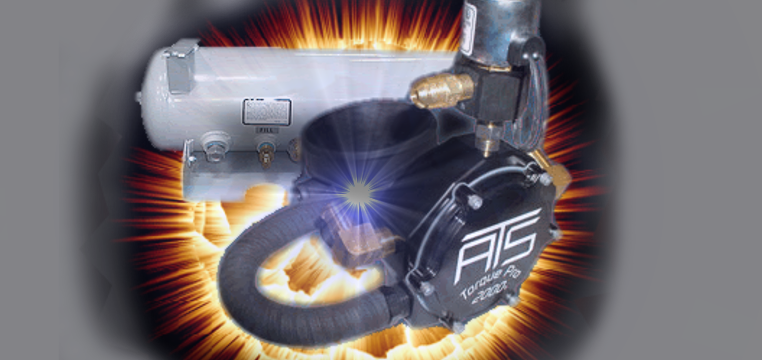Tech Articles
Propane Kit for Turbodiesels
Get Big Mileage and Power Gains With Propane Injection
By Jimmy Nylund
Photography: Jimmy Nylund
Propane isn’t just for camping stoves anymore. Sure, gas engines have been converted to run on propane for a long time, but now kits for turbo diesels are also available. Unlike the gasoline conversion, where the motor runs on LPG only, the setups for diesels inject only a percentage of propane into the air intake tract, leaving the diesel fuel as the staple diet for the motor. Also in contrast to the gas-engine conversions, which are less efficient than when run on gasoline, an LPG-injected diesel produces much more power and gets better mileage. Two kits are now on the market for propane injection.
So what makes a diesel run so much better with some propane mixed into the air? Perhaps the simplest answer is to compare it to nitrous in gas engines. In both cases, the added gas (nitrous/propane) promotes a better burn in the combustion chamber, and both are added only as needed. As Advanced Turbo Systems (ATS) puts it, “Propane acts as a diesel catalyst during combustion. This in turn creates a more complete [burn] of the diesel fuel.”
While playing with nitrous can be a highly volatile game, complete with spectacular engine explosions and more common, boring meltdowns, propane injection in diesels appears to be harmless. Still, the instructions for Bully Dog Engineering’s kit include pages of warnings, largely pertaining to the rules and regulations of having LPG on board. Yes, propane is certainly a flammable gas, but a properly installed injection kit used in conjunction with common sense is probably a whole lot less dangerous than driving on public roads, no matter what the fuel.
According to ATS, when using a 15 to 20 percent propane mix, mileage can increase by 30 to 40 percent, with overall increases of 15 to 20 percent. Longer distances between diesel fill-ups is therefore a given, but how often the LPG tank needs to be filled obviously depends on its size. It can be bed- or frame-mounted or even take the place of the spare tire.
When Bully Dog tested an early kit on a Bob Jennings’ dyno, we saw significant increases in power. Baseline was a modest 192 hp to the rear tires of a ’99 PowerStroke, but with the flick of a switch, the output exceeded the capabilities of the dyno. While tire slip fouled the numbers, an impressive 280 hp resulted between 2,200 and 2,700 rpm. Peak torque, as best as we could measure it, was a healthy 668 lb-ft, and there was more in the engine.
Unlike nitrous, propane has some soothing effects on the engine too. ATS’s Torque Pro 2000 kit claims to keep the oil cleaner, produce cooler exhaust gas temperatures (by 5 to 10 percent at identical power levels), and reduce emissions. Similar statements appear in the Bully Dog literature. ATS also says, “…and in most cases, engine life increases significantly due to increased efficiency and reduced engine wear with lower internal engine stresses.”
Installing an LPG injection kit is quite simple, with the possible exception of placing the tank, and certainly seems to have several advantages. At least, as of this writing, we don’t know of any disadvantages, although, depending on what’s downstream of the engine, some transmission improvements may be in order to match the extra power.
Pulling a sizeable load up a grade? Hit the switch (Bully Dog) or give it some more throttle (ATS), and let the propane propel you to the top.
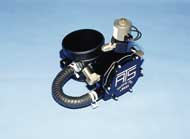
ATS uses a converter that vaporizes the liquid LPG and reduces the pressure to the vacuum to achieve consistent gas expansion. The Torque Pro 2000 converter is made from 6061-T6 aluminum and is rebuildable. It needs at least 2 inches of vacuum to flow propane vapor to the engine and more than 4 psi of manifold pressure to open the fuel lock-off valve.
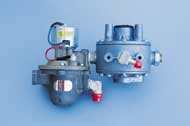
Bully Dog Engineering’s kit comes with a solenoid/regulator combo and is activated by a dash-mounted switch. An oil-pressure switch wired in series with the activation switch ensures that propane can’t be fed to a nonrunning engine by mistake. Another safeguard is that the power should originate from a key-on-only wire, as indicated in the instructions.
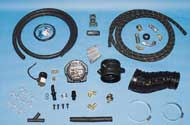
All necessary hoses, clamps, elbows, and such are included with the Torque Pro 2000. In the center is the heart of the system—the converter. Propane tanks are sold separately.
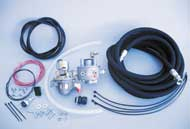
The Bully Dog Engineering kit includes all hardware, hoses, and such for a complete installation, even a protective conduit for the minimal wiring involved. Since user preference varies, no tank is included.
